4 From the faculty, four top-10s music
advertisement
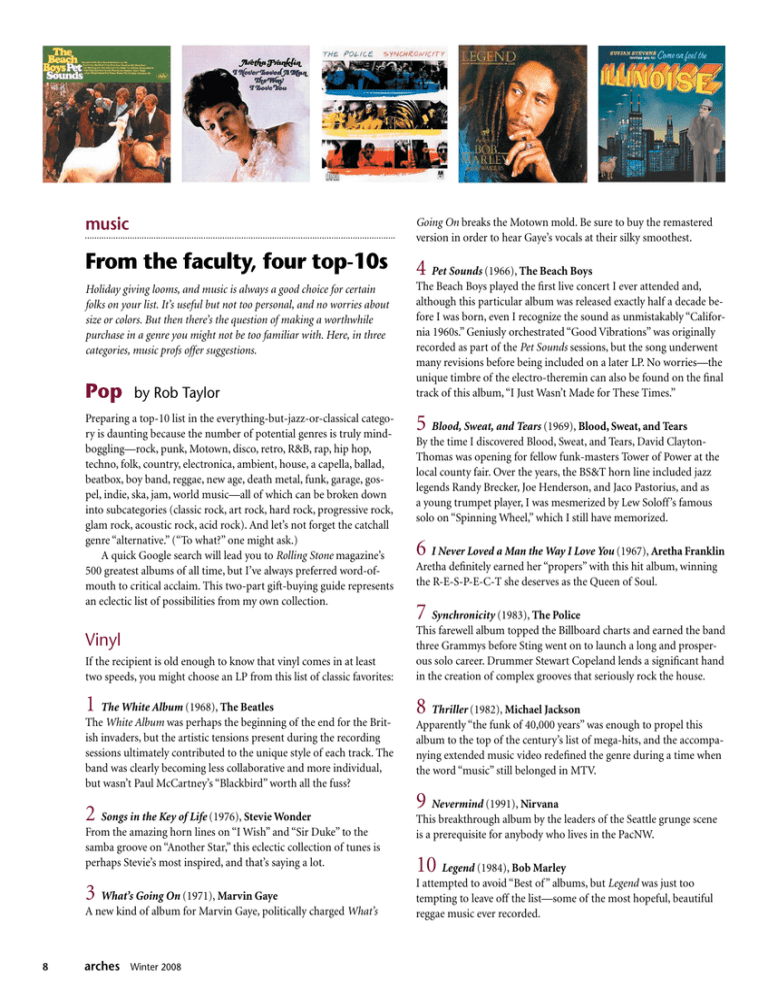
music Going On breaks the Motown mold. Be sure to buy the remastered version in order to hear Gaye’s vocals at their silky smoothest. From the faculty, four top-10s Holiday giving looms, and music is always a good choice for certain folks on your list. It’s useful but not too personal, and no worries about size or colors. But then there’s the question of making a worthwhile purchase in a genre you might not be too familiar with. Here, in three categories, music profs offer suggestions. Pop by Rob Taylor The Beach Boys played the first live concert I ever attended and, although this particular album was released exactly half a decade before I was born, even I recognize the sound as unmistakably “California 1960s.” Geniusly orchestrated “Good Vibrations” was originally recorded as part of the Pet Sounds sessions, but the song underwent many revisions before being included on a later LP. No worries—the unique timbre of the electro-theremin can also be found on the final track of this album, “I Just Wasn’t Made for These Times.” Preparing a top-10 list in the everything-but-jazz-or-classical category is daunting because the number of potential genres is truly mindboggling—rock, punk, Motown, disco, retro, R&B, rap, hip hop, techno, folk, country, electronica, ambient, house, a capella, ballad, beatbox, boy band, reggae, new age, death metal, funk, garage, gospel, indie, ska, jam, world music—all of which can be broken down into subcategories (classic rock, art rock, hard rock, progressive rock, glam rock, acoustic rock, acid rock). And let’s not forget the catchall genre “alternative.” (“To what?” one might ask.) A quick Google search will lead you to Rolling Stone magazine’s 500 greatest albums of all time, but I’ve always preferred word-ofmouth to critical acclaim. This two-part gift-buying guide represents an eclectic list of possibilities from my own collection. 5 Blood, Sweat, and Tears (1969), Blood, Sweat, and Tears Vinyl If the recipient is old enough to know that vinyl comes in at least two speeds, you might choose an LP from this list of classic favorites: This farewell album topped the Billboard charts and earned the band three Grammys before Sting went on to launch a long and prosperous solo career. Drummer Stewart Copeland lends a significant hand in the creation of complex grooves that seriously rock the house. 1 The White Album (1968), The Beatles 8 Thriller (1982), Michael Jackson The White Album was perhaps the beginning of the end for the British invaders, but the artistic tensions present during the recording sessions ultimately contributed to the unique style of each track. The band was clearly becoming less collaborative and more individual, but wasn’t Paul McCartney’s “Blackbird” worth all the fuss? 2 Songs in the Key of Life (1976), Stevie Wonder From the amazing horn lines on “I Wish” and “Sir Duke” to the samba groove on “Another Star,” this eclectic collection of tunes is perhaps Stevie’s most inspired, and that’s saying a lot. 3 What’s Going On (1971), Marvin Gaye A new kind of album for Marvin Gaye, politically charged What’s 4 Pet Sounds (1966), The Beach Boys arches Winter 2008 By the time I discovered Blood, Sweat, and Tears, David ClaytonThomas was opening for fellow funk-masters Tower of Power at the local county fair. Over the years, the BS&T horn line included jazz legends Randy Brecker, Joe Henderson, and Jaco Pastorius, and as a young trumpet player, I was mesmerized by Lew Soloff ’s famous solo on “Spinning Wheel,” which I still have memorized. 6 I Never Loved a Man the Way I Love You (1967), Aretha Franklin Aretha definitely earned her “propers” with this hit album, winning the R-E-S-P-E-C-T she deserves as the Queen of Soul. 7 Synchronicity (1983), The Police Apparently “the funk of 40,000 years” was enough to propel this album to the top of the century’s list of mega-hits, and the accompanying extended music video redefined the genre during a time when the word “music” still belonged in MTV. 9 Nevermind (1991), Nirvana This breakthrough album by the leaders of the Seattle grunge scene is a prerequisite for anybody who lives in the PacNW. 10 Legend (1984), Bob Marley I attempted to avoid “Best of ” albums, but Legend was just too tempting to leave off the list—some of the most hopeful, beautiful reggae music ever recorded. Digital If the recipient prefers mp3s to LPs, consider one of the following, all of which have recently topped the charts in my own digital library: optimistic in its musical colors and moods. The combination of Drake’s incredible singing voice, folksy acoustic guitar playing, and sparse piano accompaniment make this album sublime. 1 Illinoise (2005), Sufjan Stevens 8 Justified (2002), Justin Timberlake 2 Ágætis Byrjun (A Good Beginning) (1999), Sigur Rós 9 Careless Love (2004), Madeleine Peyroux This album is epic, creative, insightful, smart, whimsical, and eminently listenable. The colorful orchestrations in this set make Illinoise one of the best indie rock albums ever conceived. The musical landscapes captured by the electro-acoustic quartet Sigur Rós are as stunning as those of their native Iceland. Language is no barrier—the organically developed musical motives that unify the album will transport you to another world, guaranteed. 3 St. Elsewhere (2006), Gnarls Barkley “Crazy” was the biggest commercial hit from this recent neo-soul album, a wildly successful collaboration between producer Danger Mouse and former Goodie Mob singer Cee-Lo Green, but my favorite track might very well be the strangely enticing Violent Femmes cover “Gone Daddy Gone.” 4 Details (2002), Frou Frou Frou Frou’s popularity soared after the inclusion of “Let Go” on the immensely popular Garden State soundtrack. A brilliant collaboration by two extremely talented artists, singer/songwriter Imogen Heap and producer Guy Sigsworth (of Björk fame), Details challenges all assumptions about electronica with its warmth and spirit. 5 Twentysomething (2003), Jamie Cullum British crooner Jamie Cullum caught my attention with his cover of “Singin’ in the Rain,” but it’s the ballad “All at Sea” that truly makes this album un-do-without-able. If Twentysomething seems a little too jazz oriented for your taste, check out Cullum’s sophomore release, Catching Tales, which is even more original. 6 Little Sparrow (2001), Dolly Parton Dolly Parton has star power like no other, and while Little Sparrow may not be as groundbreaking as her earlier release The Grass is Blue, you simply must hear Dolly sing Cole Porter’s “I Get a Kick Out of You” (with the original lyrics). 7 Pink Moon (1972), Nick Drake Two years after the completion of this album, Nick Drake died of an antidepressant-induced drug overdose, yet Pink Moon is surprisingly Triple-threat-in-a-box (minus the acting part) Justin Timberlake is one of the most talented former boy-band singers to launch a successful solo career. Wardrobe malfunctions aside, unlike most of his peers, JT actually sings … live. While American-born singer Madeleine Peyroux is most often compared to Billie Holiday, she can give even the greatest French chanteuse a run for her money. “J’ai Deux Amours” trumps her earlier cover of Edith Piaf ’s “La Vie en Rose,” and although there are no cheerful marimba bass lines like the one found in “I’m Gonna’ Sit Right Down and Write Myself a Letter” from her debut album, Dreamland, Careless Love is perfect rainy-day music. 10 Home (1994), Spearhead Home features the poetry of frontman Michael Franti in a socially conscious romp that has been said to engage “brain, booty, and soul.” If none of these 20 albums seems like a perfect match, you can always play it safe and buy an iTunes gift card, which can be used to (legally) download a collection of individual songs. In any event, classic-art-hard-progressive-glam-acoustic-acid rock on… Rob Taylor is director of bands, head of the wind and percussion department in the School of Music, and owner of two iPods. Jazz by Rob Hutchinson When the topic of great jazz comes up, most everyone knows about Louis Armstrong (“West End Blues”), Charlie Parker (Bird With Strings), Miles Davis (Kind of Blue), and John Coltrane (Giant Steps). But for my top-10 jazz albums I figured I’d share some lesser-known recordings alongside the classics, with the hope you’ll make some new discoveries. 1 Clifford Brown and Max Roach (1954), Clifford Brown and Max Roach This album has several classics that instantly entered the canon: “Joy Spring,” “Daahoud,” “Jordu,” and “Delilah,” to name a few. Great jazz from the 1950s. Winter 2008 arches 2 Relaxin’ (1956), Miles Davis Although the other “gerund” albums by Miles are all masterpieces (Workin’, Cookin’, Steamin’), Relaxin’ is my favorite because of the selection of tunes, including “Oleo,” “If I Were a Bell,” and “I Could Write a Book.” To me, this is the quintessential jazz album. 3 Waltz for Debby (1961), Bill Evans There are many reasons this album is so heartbreakingly beautiful. Legendary Bassist Scott LaFaro died at age 25 in an automobile accident, two weeks after this session was recorded. Evans himself only lived to age 51. Toward the end of his life he played here in the North End at Engine House No. 9 and supposedly taught a piano lesson in a UPS practice room the next day. Bill Evans has influenced every major jazz pianist since his time. Chick Corea, Keith Jarrett, and Herbie Hancock, to name a few. There are several gorgeous ballads: “Waltz for Debby,” “My Foolish Heart,” and “I Loves you Porgy.” In addition, there’s a great, swinging version of “My Romance.” 4 Word of Mouth (1981), Jaco Pastorius Did I mention that I’m a jazz bassist? It may be that I’m biased, but I believe that Jaco was the Charlie Parker of the 1970s. He revolutionized electric bass playing (imitators of his fretless bass sound abound) and participated in the “fusion revolution” of the 1970s as a member of Weather Report and a leader of his own groups. This recording features Jaco’s idiosyncratic big band, which adds French horn, piccolo, harmonica, and steel drums to the traditional trumpets, trombones, saxophones, and rhythm section. My favorite tracks are “Liberty City,” “Three Views of a Secret,” “John and Mary,” and his version of the Beatles’ “Blackbird.” 5 Blue Matter (1986), John Scofield In my mind, this album is a celebration of one of the greatest funk rhythm sections of all time: Dennis Chambers (drums) and Gary Grainger (electric bass). Scofield penned an entire album of great tunes with catchy melodies, strong grooves, and colorful harmonies. One note: it might sound dated to some because of the synthesizer sounds; it was 1986, after all. 6 Standard Time Vol. 2: Intimacy Calling (1987), Wynton Marsalis This album sounds like the jazz of the 1930s and 1940s, but with the clarity of a recording from the 1990s. It’s the perfect album for unwinding after a long day. Marsalis does some of his finest lyrical playing on ballads like “When It’s Sleepytime Down South,” “Indelible and Nocturnal,” and “Yesterdays.” 10 arches Winter 2008 7 Still Life (Talking) (1990), Pat Metheny Group This is still my favorite Pat Metheny album. (Letter from Home is a close second.) During this era the Pat Metheny Group was known for adding wordless vocals and Brazilian percussion to a traditional jazz combo. The first tune, “Minuano,” is a masterful nine-minute composition that travels through many disparate landscapes; it still serves as a model for my composing, even though I compose classical music. Metheny, a guitarist, improvises in a highly lyrical bebop style. Particularly impressive is the blazing fast “Third Wind.” And the final track, “In Her Family,” although it has no improvising, is an intimate, poignant composition. 8 Return of the Brecker Brothers (1992), The Brecker Brothers This finely produced album is a masterful blend of jazz, funk, and hip-hop (with lots of samples and loops). Highlights include the first three tracks (“Song for Barry,” “King of the Lobby,” and “Big Idea”) and Michael Brecker’s composition “Spherical.” Drummer Dennis Chambers (from 5, above) appears on several tracks. 9 Song of the Sun (1992), Jim Beard Jim Beard has a unique voice as a composer, as demonstrated by the incredible synthesis of influences on this album—world music, funk, and jazz. The first track, “Camieff,” is light and playful; “Holodeck Waltz” is slightly bizarre but perfectly suits its title; “Lucky Charms” is a juxtaposition of two keys over a great funk groove; and “Crossing Troll Bridge,” the final track, is a noble anthem with colorful harmonies. Featuring Dennis Chambers on drums and the legendary Michael Brecker on sax. The CD is hard to find, but we have it in the UPS library! It’s CD 2736. 10 Blue Hats (1997), The Yellowjackets This jazz quartet features tenor sax, piano (and synthesizer), drums, and fretless electric bass—I think of it as the perfect update to classic jazz of the 1950s. Blue Hats is full of refined playing and composing—Bob Mintzer has a mellow tenor sax sound, never harsh, and Russell Ferrante, the pianist, is a master of jazz harmony. The music ranges from the rollicking opening number “Capetown,” with its African-influenced polyrhythms, to an up-tempo blues “Statue of Liberty,” featuring Bob Mintzer on bass clarinet, to the haunting closing ballad “Angelina.” My personal favorite is the funk-shuffle “New Rochelle,” a direct descendant of Jaco Pastorius’s “Liberty City” (see 4, above). Associate Professor of Music Robert Hutchinson teaches music theory, composition, orchestration, musical analysis, counterpoint, and jazz improvisation at Puget Sound. Classical by Geoffrey Block With emphasis on the performer, rather than the recording: 1 Jascha Heifetz (1899-1987), violinist Heifetz gave his last public concert in 1974. Throughout his brilliant, 60-year career, Heifetz established and maintained a standard for technique, tone, and musicianship that impacted nearly every violinist since, including future greats David Oistrakh, Isaac Stern, Itzhak Perlman, and Gidon Kremer. 2 Vladimir Horowitz (1903-1989), pianist The last of the great Romantic pianists, Horowitz demonstrated enormous virtuosity, showmanship, personality, and passion. His return to the concert stage in the 1960s after a 12-year retirement and his return to Russia after a 61-year absence remain among the most dramatic events in music of the last 50 years. Runner up: Chopin specialist Arthur Rubinstein (1887-1972). 3 Leonard Bernstein (1918-1990), conductor, composer, educator The composer of On the Town and West Side Story, Bernstein was probably the best known and perhaps the most gifted classical musical personality of his generation. The first American-born conductor of a major American orchestra, Bernstein championed American composers such as Ives, Gershwin, and Copland, as well as fellow composer-conductor Mahler, and brought classical music to millions in his visible public role as an educator. 4 Maria Callas (1923-1977), soprano Despite some debilitating vocal problems as her relatively brief, almost meteoric career progressed, Callas was arguably the most electrifying dramatic singer of her era, if not her century. In her later years Callas’s inspirational master classes at the Juilliard School in 1971 inspired a popular play in the 1990s by Terrence McNally. 5 Beverly Sills (1929-2007), soprano, arts administrator Like Callas, a phenomenal operatic actress, Sills was the most famous and beloved American star of the 1960s and 1970s. After establishing her credentials with the Opera Company of Boston and New York City Opera, Sills made her long-awaited Metropolitan Opera debut in 1975, where she enjoyed an 18-minute ovation. 6 Glenn Gould (1932-1982), pianist This eccentric Canadian genius was one of the most distinctive and influential pianists of his generation. Both before and after his highly publicized retirement from concert life in the 1960s, Gould possessed a dazzling technique and conveyed imaginative visions of his chosen repertoire. His interpretations of Bach and other less- traveled keyboard composers, as well as Beethoven, Brahms, and even Schoenberg and Strauss, remain among the great recorded legacies of the 20th century. Runners up: Marta Argerich, Evgeny Kissin, and Murray Perahia. 7 Plácido Domingo (1941-), tenor, conductor Known worldwide as one the Three Tenors, Domingo is probably the most versatile international male opera star of the last 50 years, singing roles as diverse as Verdi’s Radames, Don Carlo, and Otello, Bizet’s Don José, and Berlioz’s Aeneas. Since the 1970s Domingo has also enjoyed a distinguished second career as opera conductor. Runners up: Tenors Luciano Pavarotti and Jon Vickers (opera) and baritone Dietrich Fisher-Dieskau (Lieder). 8 James Levine (1943-), conductor, pianist As conductor and later artistic music director of the Metropolitan Opera beginning in the 1970s, Levine, also an accomplished pianist, raised the level of the orchestral playing and overall technical and artistic quality of this august classic musical institution. Runner up: Conductor Roger Norrington for his magnificent contribution to the historical performance movement. 9 Yo-Yo Ma (1955-), cellist From the time he was a child, Ma has shared his impeccable technique and extraordinary communicative skills as an orchestral soloist, chamber music player, and music educator. The heir to Pablo Casals, Gregor Piatigorsky, and Mstislav Rostropovich, Ma is not only a truly great cellist, he is also an articulate and personable cultural ambassador for musicians all over the world. 10 Wynton Marsalis (1961-), trumpeter, composer, educator Although his classical credentials may seem limited to the Grammy he received in his early 20s for his classical trumpet recording in 1984 (the same year he won a Grammy for jazz), more than any artist Marsalis transformed jazz into a “classical” art form and gave it a home in New York’s Lincoln Center. Geoffrey Block, professor of music history at UPS since 1980, is the author of three books on Charles Ives and three books on the American musical, including Enchanted Evenings: The Broadway Musical from “Show Boat” to Sondheim (Oxford University Press, 1997) and Richard Rodgers (Yale University Press, 2003), the inaugural volume of the Yale Broadway Masters series, for which Block serves as general editor. Winter 2008 arches 11
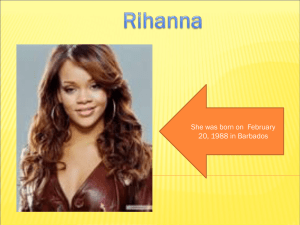
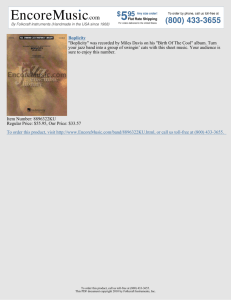
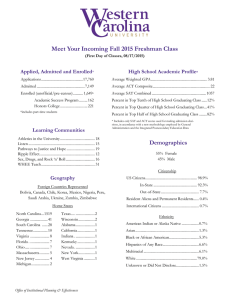
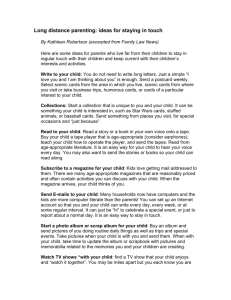
![[1] AFTER So many years in the music scene what is this thing that](http://s3.studylib.net/store/data/008973040_1-079d8e4c5ba4ad65f3506c6eab9d1b36-300x300.png)
